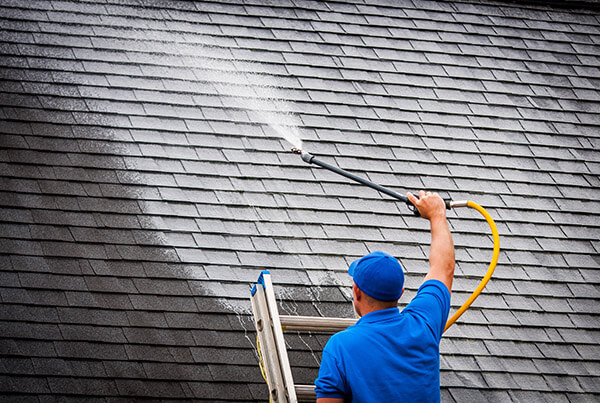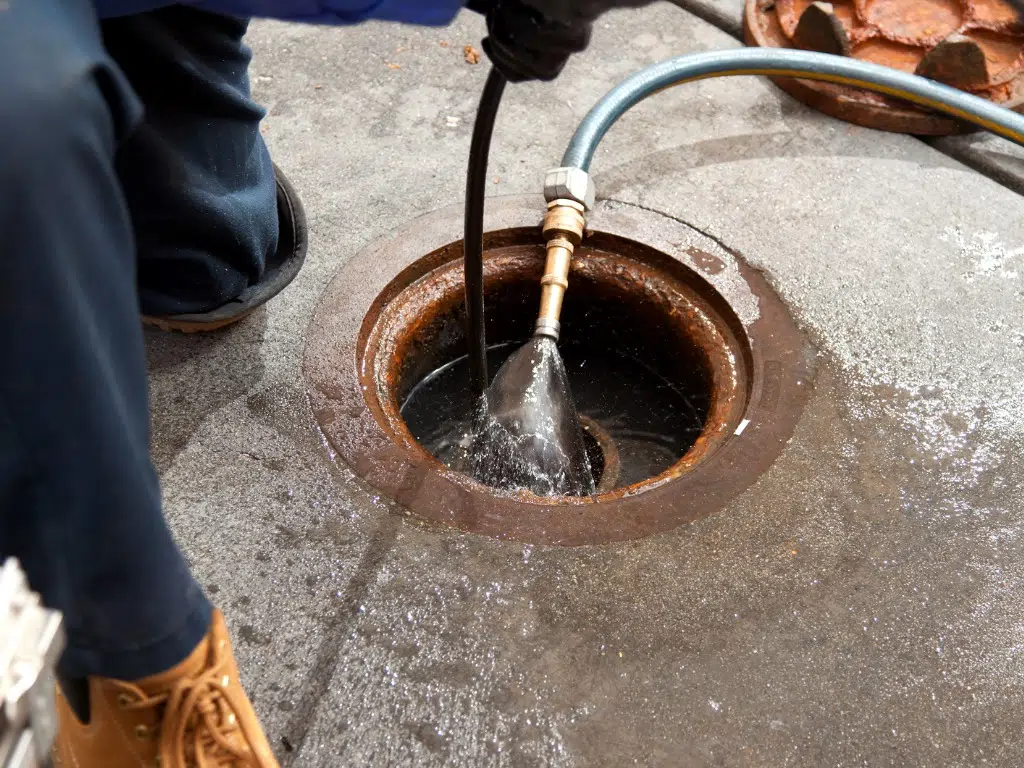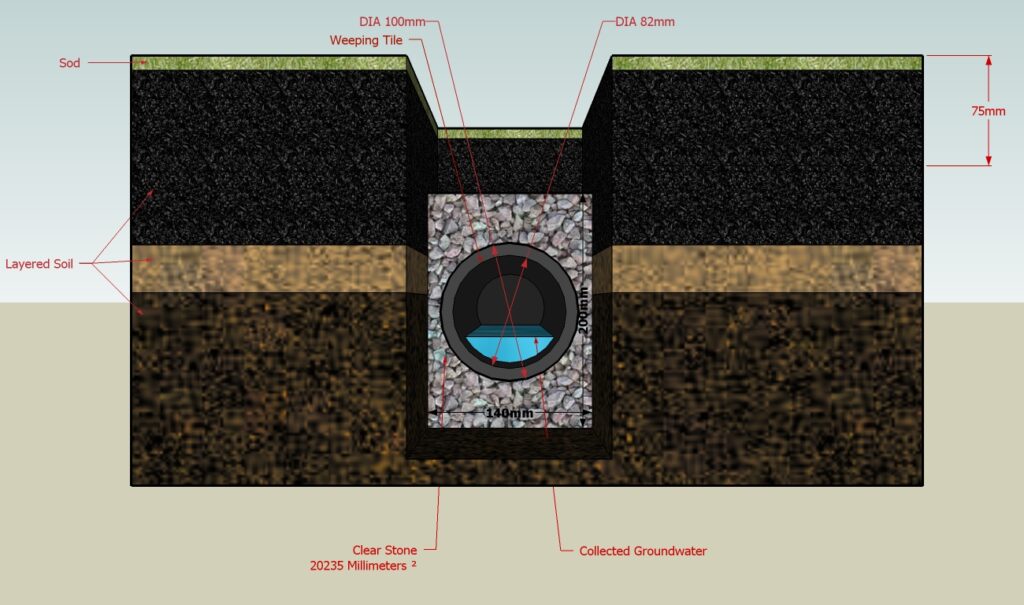Installing a French drain involves many intricate steps, each of which has the potential to go awry. It may be easy to fix some small mistakes, but others could cause major setbacks to your drainage project. Although working with a professional drainage company is the best way to avoid costly, time-consuming mistakes, you may choose to DIY a French drain project.
Whether you are planning your DIY French drain installation or troubleshooting a project that has gone a little off-course, we’ve got you covered.
Let’s take a look at 5 of the most common French drain mistakes that you should avoid. If you have already made the mistake, we will walk you through what to do next!
Mistake #1: Miscalculating the correct trench depth
The depth of a French drain is dependent upon several factors, but the most important aspect is this: it has to be deep enough to move water from an undesired spot to the place you want it to go.
Usually, a depth of 18-24 inches is necessary. The exact depth, however, may be affected by the following factors:
- The water table level: A drain placed below the water table won’t function correctly
- The frost line: French drains must be installed below the frost line to prevent freezing during the cold winter months
- Slope: You need at least a 1% slope (1-inch drop per 100 feet) or the water won’t flow correctly
- The surrounding terrain: Your drain must be deep enough to effectively collect water from the area you want to protect from flooding
- Local zoning codes: Some municipalities set rules regarding the required depth of drainage projects
How to fix a trench that is too deep or too shallow
If you dug a trench that is too deep, the following strategies should help:
- Add fill material like crushed stone to bring the trench up to the appropriate depth
- Create a layered system, starting with larger rocks and then layering smaller stones and landscape fabric over them
- Focus on modifying the slope of the drain
- Use coarse sand to make small adjustments to the depth of the trench
- If you can’t fix the depth of the drain, create a deeper outlet for the water so that it’s below the trench level
If the trench is too shallow, your most straightforward solution is to re-excavate the trench to reach the necessary depth while paying attention to underground utilities.
Alternatively, you may try the following options:
- Build up the ground around the drain by building a berm or swale
- Use a larger-diameter pipe to compensate for the reduced depth
- Install a sump pump for a severely undersized trench
- Improve the surface grading
- Add inlets so that there are more entry points for water to enter the drain
- Use highly permeable backfill around the pipe, improving water collection
-
- Measure the distance from this point to where the drain will discharge.
- Calculate the necessary slope (at least 1%).
- Add extra depth for gravel bedding (about 3-4 inches).
- Consider local building codes and frost line depths.
Mistake #2: Using the wrong type of drain rock
French drains are lined with gravel, but not just any rock will do. You need to use round, natural stones that are about 1.5” in diameter. Clean stone is important because sediments like dirt and sand will slow down the movement of water through the drain.
Some problematic stone choices include pea gravel, which is too small; crushed rock, which has too many clogging particles; and lime rock, which is cheap but deteriorates over time.
Basically, if the rock is too big, too small, or too dirty, your drain will have trouble moving water from Point A to Point B, which is the whole point of your hard work. But what can you do if you used the wrong type of drain rock?
How to fix rock selection issues
If you purchased but have not yet installed the rock, you should contact the seller to discuss your options. Bulk gravel is usually non-returnable, but you may be able to explain your circumstances. If the vendor will not process a return, you may need to use the gravel for a future project or offer it for sale to someone in your community.
If you used the wrong kind of rock, you may need to remove the gravel and replace it with the correct kind. This could be a huge task, so it is important to confirm what kind of gravel to use before you begin your project.
If you used crushed stone, you might be able to wrap the drainpipe in a pipe sock or drain sleeve to protect the pipe from sediments that would clog up the drain holes. Homeowners who can’t achieve the right slope often choose alternate yard drain designs like trench or channel drains.
Mistake #3: Failing to add drainage fabric
Drainage fabric is used to keep soil, mulch, sand, and other debris from blocking the water intakes of your drain. A clogged drain is an ineffective drain, and it is difficult to unblock those drainage holes after the pipe has been covered with dirt.
There are two potential French drain mistakes to make when it comes to drainage fabric: using the wrong kind or forgetting to install it altogether.
You may see this product described as landscape fabric, non-woven drainage fabric, geotextile fabric, or filter fabric. Technically, you can choose either woven or non-woven fabrics, but keep in mind that non-woven fabric was invented for this very purpose: letting water pass through easily while blocking sediments of all kinds.
Non-woven fabric is less prone to clogging over time when compared to woven fabric. It is also better at preventing soil from entering the drain and causing sluggishness.
How to fix fabric issues
If you already installed the wrong fabric and covered the drain, your best option is to monitor the drain for effectiveness. If everything is going well, you may not need to make any changes. However, your drain may need repairs and maintenance earlier than other drains installed at the same time, with the correct fabric.
Other factors that may require excavating the drain and replacing the fabric include:
- Fine soils may cause more problems for woven fabrics than sandy soils
- A hardworking drain in an area with lots of water flow may need to have the fabric replaced right away
If you decide to replace the fabric, you will have to re-excavate and replace the woven fabric with non-woven. If that is too difficult, you may be able to add a layer of non-woven fabric on top of the existing system.
Mistake #4: Choosing the wrong kind of pipe
Selecting the right materials for your French drain is crucial for the project’s effectiveness. That includes the pipe. In fact, the drain pipe might be the most important piece of material you can choose!
Key factors for choosing the right pipe include:
- Use perforated PVC or corrugated plastic pipes that are designed for drainage
- Most residential drains can use a standard 4-inch pipe, but larger projects may require larger drains
- Check that there is plenty of perforation; too little perforation and the water will not flow
- Double-check the crush strength of the pipe to confirm that it can withstand the weight of the soil and surface activity
The most common French drain mistakes when it comes to pipe selection are using pipes that are too small or using non-perforated pipes.
How to fix the wrong drainage pipe
Assess the severity of the problem first. If the drain is currently working, you may not need to make a change right away.
You may also be able to do a partial replacement, but speak with a landscaping professional to know if that is an option. In extreme cases, you will need to excavate the entire drain to replace the pipe.
Another correction is to upgrade the system by adding a second pipe, parallel to the first one. Unfortunately, this is still a major project.
A professional landscaping team may also recommend that you add clean-out ports at any major bends in the pipe system, which will make it easier to flush out the pipe to clear clogs. You may be able to add perforation to a non-perforated pipe, as long as it hasn’t yet been installed.
Mistake #5: Getting in over your head with a challenging project
This last mistake could involve any of the above mistakes – or others that we haven’t covered here!
DIY projects can be an exciting challenge and a budget-friendly way to address landscaping problems, but they can also go wrong. When it comes to a huge, labor-intensive drainage project, there are so many things that can go wrong. In addition to the mistakes we’ve listed here, you may also end up encountering installation challenges, broken equipment, and a cascading series of errors.
It’s important to know when you need to take a step back and call in the professionals!
How to get help when you’re overwhelmed by a drainage project
A professional landscaping company will provide a free consultation to help you identify your problems and propose the best possible solution.
Working with drainage installation experts means that every single decision is made with decades of knowledge and experience. Instead of spending more money and energy on a project that is overwhelming you, why not speak to the professionals and get this project back under control?
Ware Landscaping–Your Northeastern Illinois Drainage Pros
At Ware Landscaping, we have been solving drainage problems for Northeastern Illinois homeowners and business owners for over twenty years. Our teams are dedicated to providing you with the best customer service in the region at competitive rates.
Whether you are halfway through a project that has gotten out of control or you already know that you are not equipped for a French drain, Ware Landscaping is ready to help.
Check out our portfolio of drainage improvement projects and other services to see our work! When you’re ready for a free quote, contact us and we’ll be there for you right away.










